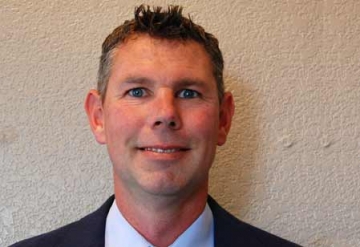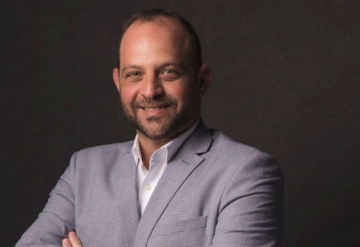THANK YOU FOR SUBSCRIBING

 Raymond, Global Senior Design Leader, DLR Group
Raymond, Global Senior Design Leader, DLR GroupRaymond Kent is an award-winning senior leader in creative entertainment, experiential design, and technology consulting. As Principal and Senior Design Leader at DLR Group, he directs operations across all of DLR group’s market sectors, specializing in acoustics, audiovisual, lighting, and theater planning. His work spans premier global clients in cultural, hospitality, and corporate sectors.
Recognizing Raymond Kent’s expertise in experiential design and technology consulting, this interview explores the challenges of leading multidisciplinary teams, AI-driven design evolution, workforce flexibility, and career growth strategies in the built environment.
Role and Responsibilities at DLR Group
I am a Global Senior Design Leader at DLR Group, an international firm with 36 offices worldwide. Our work spans multiple verticals, including cultural performing arts, K-12 and higher education, justice and civic, hospitality, transportation and workplace design. With over 20 years at the firm, I primarily lead teams in cultural performing arts while also contributing to various other sectors.
“Networking is another critical factor. Don’t be afraid to introduce yourself, meet people, and build relationships across industries. Learn from mentors, colleagues, and even those younger than you—everyone has valuable insights to offer”
I founded our specialty services division, encompassing audio, visual, acoustics, lighting, theatre technology, IT security, and more. In addition to my leadership role, I teach theatre technology at the college level and frequently contribute articles to industry publications. I am also a keynote speaker and presenter at national and international conferences, sharing insights on design, technology and innovation in the built environment. My expertise lies in shaping immersive and technologically advanced spaces across diverse industries.
Current Industry Challenges and Strategies for Navigation
One of the major challenges in the industry today stems from recent executive orders by the current administrations, which have financial implications across various verticals. For example, in the education sector, changes in federal funding for the Department of Education have created uncertainty for K-12 and higher education projects. Many institutions and organizations are hesitant to move forward with new projects until they gain clarity on funding availability. Similarly, in the cultural performing arts sector, financial freezes on grants and loans that clients typically rely on are causing delays in project launches. Federal tax credits, such as historic or new market tax credits, also play a crucial role in making clients reconsider whether now the right time to proceed with investments is.
Another pressing challenge is the impact of tariffs on materials and equipment. Many manufacturers we work with—whether for HVAC, electrical, audiovisual, or IT infrastructure—are facing uncertainties due to global trade policies. Since much of this equipment is produced overseas, tariff adjustments influence production costs, affecting project’s affordability and feasibility. Manufacturers must adhere to global sustainability standards, particularly in regions like the European Union, where regulations are stringent. This means they are unlikely to create separate product lines for different markets, further impacting pricing and availability in the U.S.
As a leader with years of industry experience, I navigate these challenges by maintaining close communication with manufacturers and clients to anticipate changes and adapt our project strategies accordingly. I also focus on diversifying project funding sources, exploring alternative solutions for material sourcing, and staying ahead of regulatory shifts. By staying informed and flexible, I help clients make wellinformed decisions that align with the evolving economic and policy landscape.
The Future of Design: AI, Flexibility, and Workforce Evolution
The design industry is undergoing a seismic shift, driven by artificial intelligence’s expanding capabilities. Unlike earlier iterations of AI, modern advancements in computational power and proprietary data curation—such as our firm’s tailored datasets—enable unprecedented precision in automating workflows and refining creative processes. Rather than shortening project timelines, AI reallocates human effort that handles repetitive documentation tasks, liberating professionals to tackle complex design challenges and strategic decision-making, thereby elevating both output quality and expertise.
At the same time, rigid workplace structures are dissolving. Post-pandemic, hybrid and remote models have become non-negotiable for younger, digitally native talent, who constitute threequarters of the workforce by year’s end. Organizations clinging to 9-to-5 office mandates risk alienating this demographic, this prioritizes autonomy and work-life integration. Meanwhile, forward-thinking firms are reimagining collaboration through flexible policies and adaptive spaces, aligning with values that attract top-tier innovators.
Education, too, is evolving beyond traditional lectures. Progressive institutions now emphasize metacognitive skills—teaching students how to learn—through personalized, interactive curricula. This approach nurtures adaptable, critically thinking graduates with soft skills like problemsolving and empathy. As designers, we must mirror this shift by creating dynamic workplaces and campuses that spark creativity through fluid layouts and tech-integrated hubs. In this era of disruption, success hinges on agility. Firms leveraging AI’s efficiency gains, embracing workforce fluidity, and supporting next-gen education will dominate.
Advice for Aspiring Professionals: Skillset, Passion, and Lifelong Learning
For young professionals looking to make a mark in the industry, my advice is to focus on developing a strong skillset rather than fixating on a specific job title. Too often, people get caught up in labels—architect, engineer, lawyer— without considering the broader skills that truly drive success. Careers are rarely linear, and economic shifts like the 2008 financial crisis or the pandemic have shown adaptability is crucial. Many professionals pivot into different roles throughout their careers, and those with transferable skills—technical and soft skills—are better positioned for longterm success.
Emotional intelligence, communication and business acumen are just as important as technical expertise. If you aspire to senior leadership or business ownership, understanding finance and operations is essential—even if your degree didn’t cover those topics. Choose electives strategically, explore diverse learning opportunities, and always remain curious.
Networking is another critical factor. Don’t be afraid to introduce yourself, meet people, and build relationships across industries. Learn from mentors, colleagues, and even those younger than you—everyone has valuable insights to offer. As an educator, I learn just as much from my students as I do from experienced professionals.
Beyond formal education, numerous resources support continuous learning. My podcast, Theatre Operations Unleashed, explores career development, including how to enter MFA programs and build well-rounded expertise. The key to success is being open to learning, embracing new experiences, and constantly expanding your knowledge base. Those who remain adaptable and proactive in skillbuilding will thrive in any career.
Read Also
Development of the Logistics Warehousing Market in Brazil
Driving Innovation and Preserving Tradition
Operational Leadership VS Field Leadership in the Utility Construction Business
People-First Innovation: Developing Virtual Design and Construction (VDC) Training Programs to Empower Field Team Members
Sustainable Projects: Aligning Business and Purpose in Latin America
Engage Smarter: Why Constraints Matter More Than Hazards

 Copyright © 2025 All Rights Reserved | by:
Copyright © 2025 All Rights Reserved | by: Construction Tech Review
| Subscribe | About us | Sitemap| Editorial Policy| Feedback Policy














